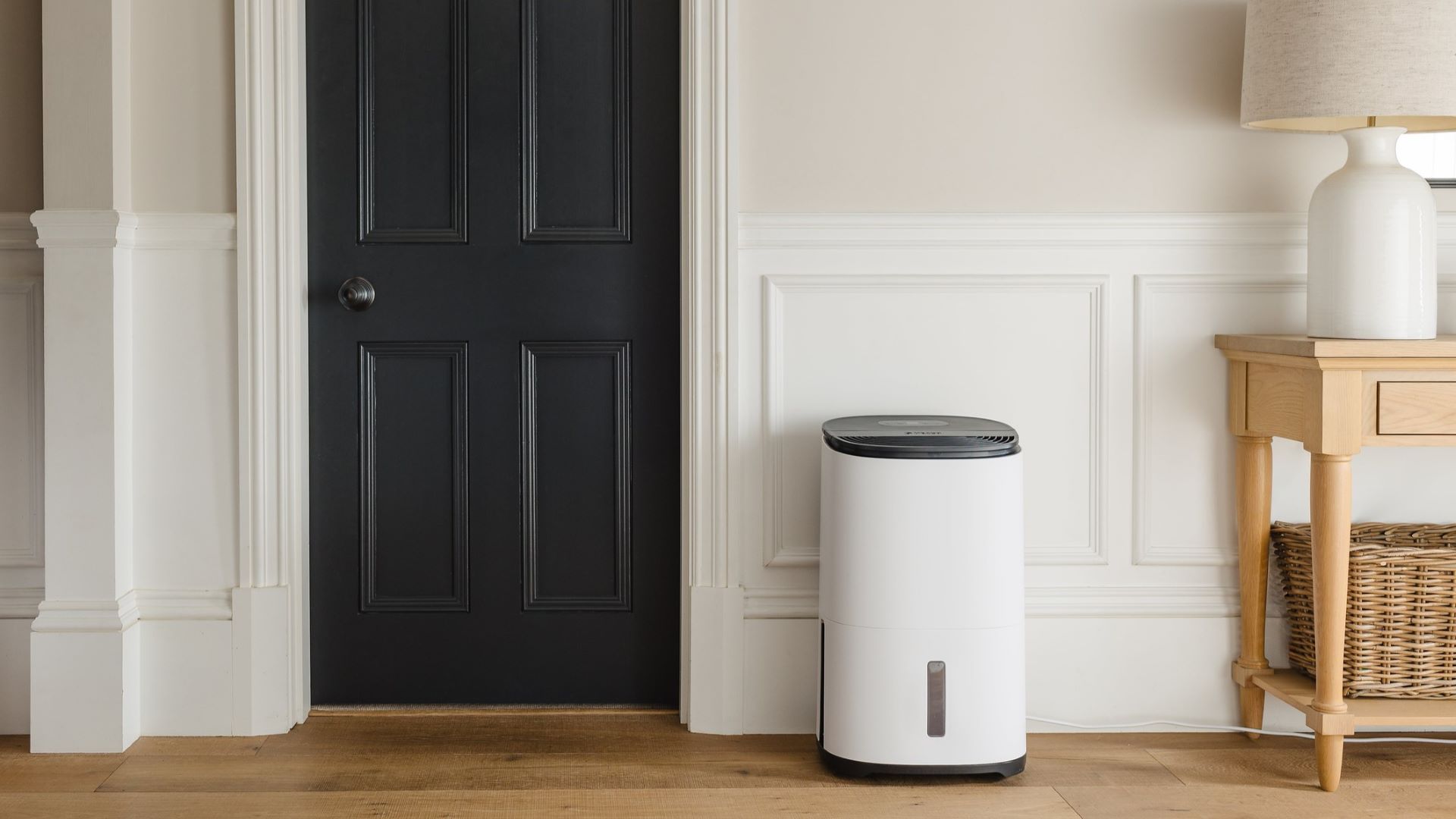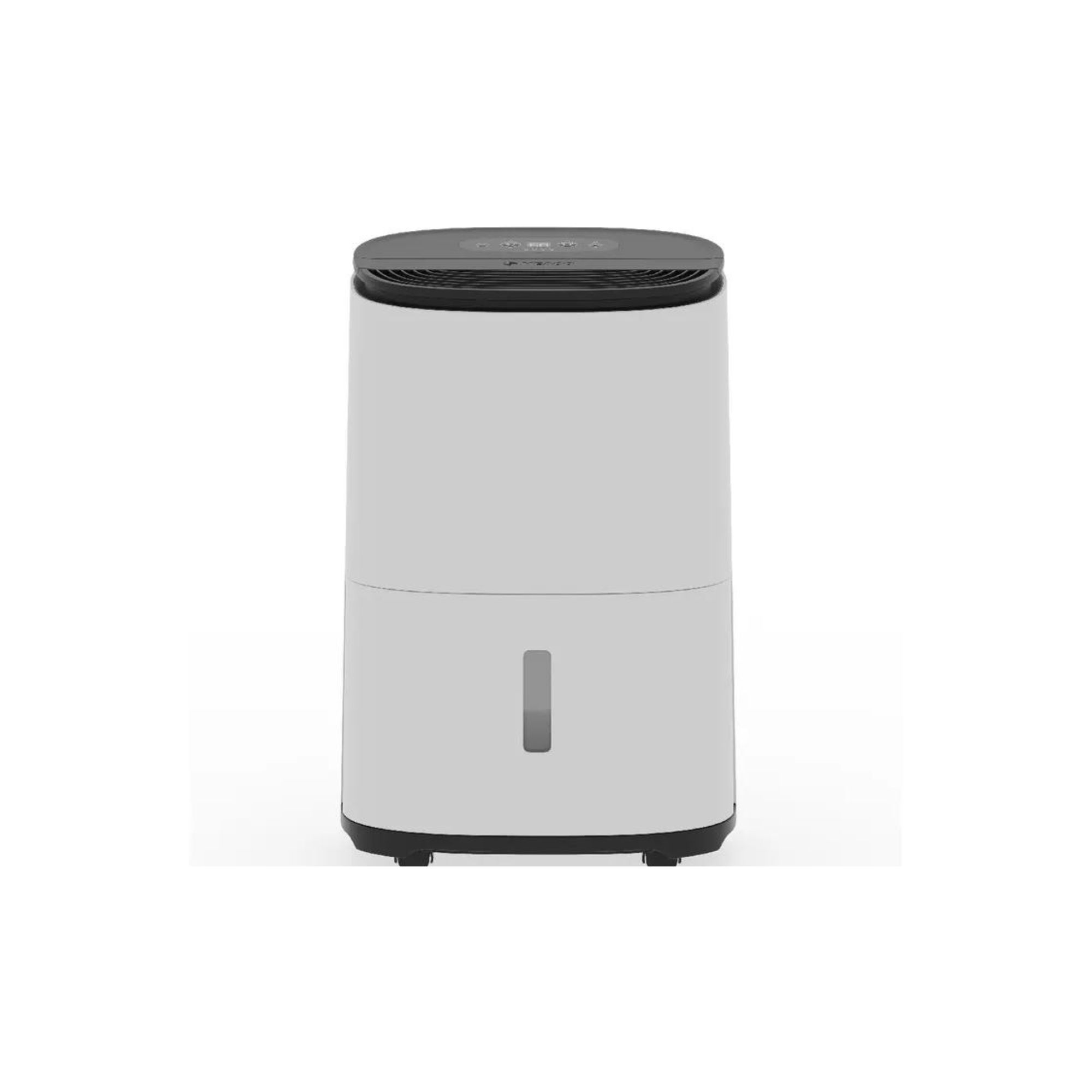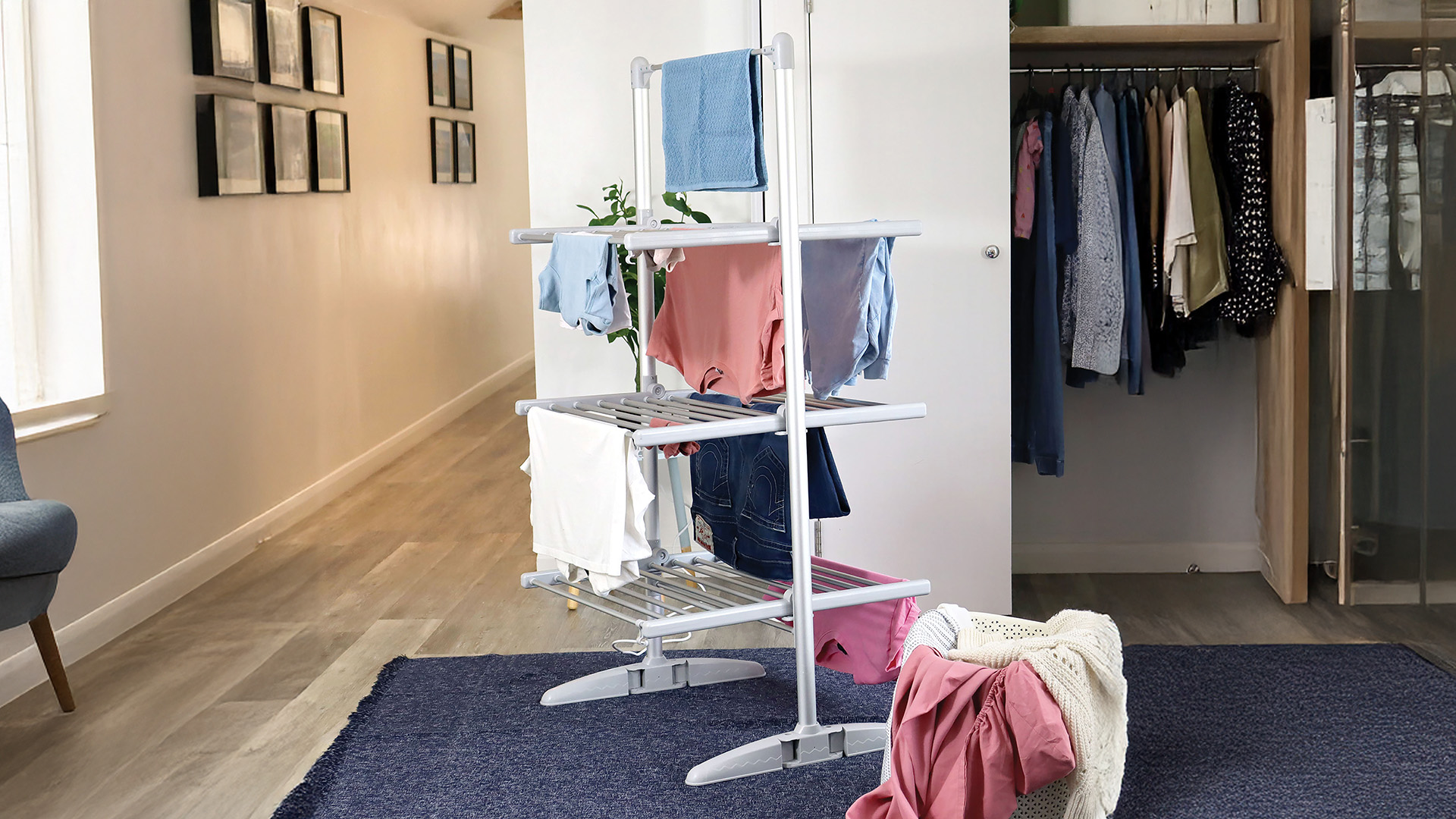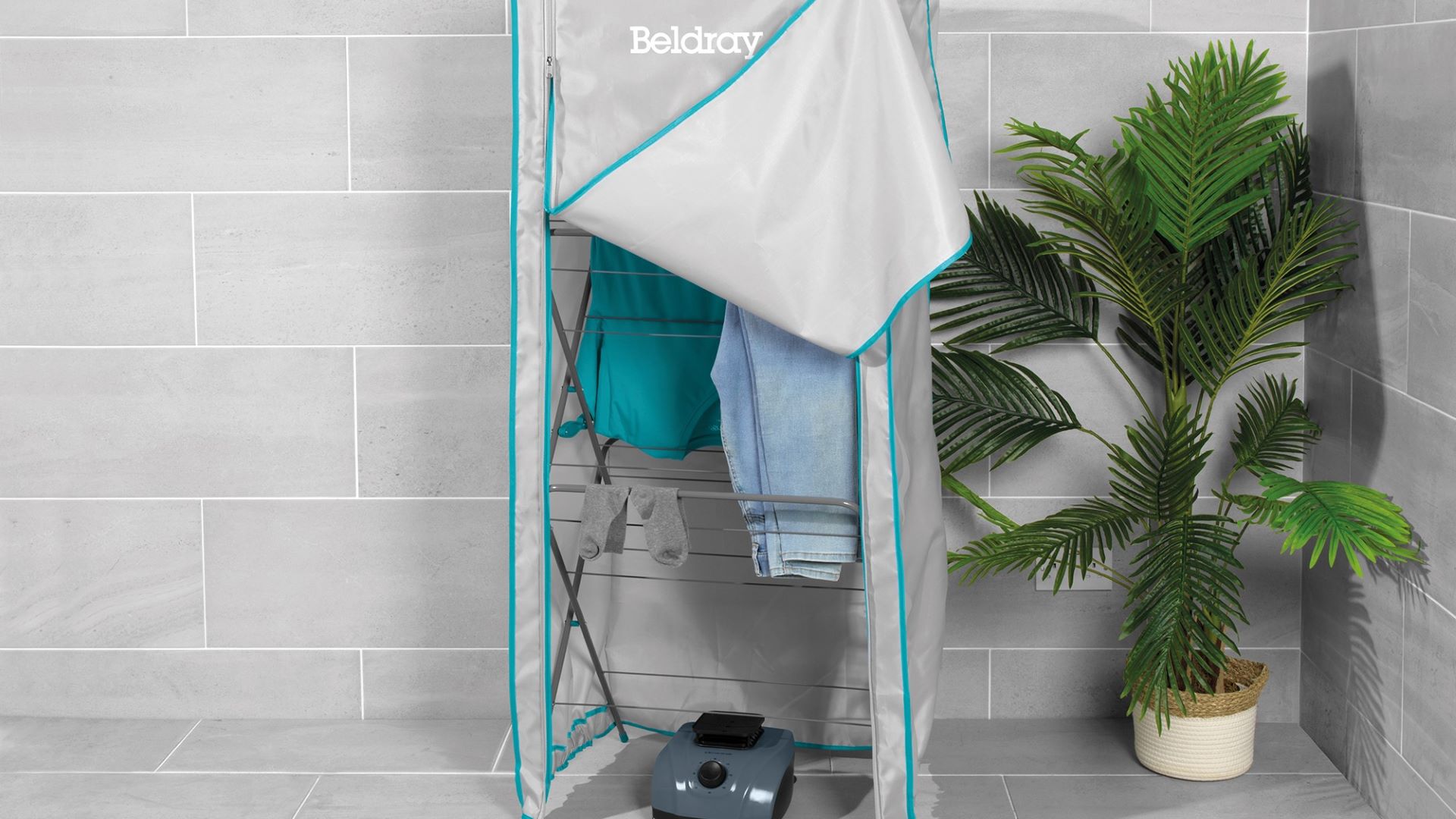
Heated airers are a gamechanger for drying clothes in winter, but I doubt I'm the only one committing heated clothes airer mistakes on a regular basis. The experts have clarified why we should be avoiding these mistakes, and how we can get the most out of our heated airers going forward.
You might have been using one of the best heated clothes airers for a while, or you may be preparing to use one for the very first time. Either way, you need to know the common heated clothes airer mistakes and how to avoid them, if you want to dry clothes indoors with maximum efficiency.
Just like there are common electric blanket mistakes, there are many ways you can use your heated clothes airer wrong. We might think it's as simple as hanging our wet clothes on the racks, switching the airer on, and leaving the clothes to dry, but there's actually a whole lot else to consider if you want to protect your clothes - and your home - in the process.
Common heated clothes airer mistakes to avoid
We've spoke to the experts and asked them to share the most common heated clothes airer mistakes, plus solutions on what to do differently. Just like knowing the laundry mistakes that make your home untidy, becoming aware of heated airer mistakes is the first step to getting the most out of your device going forward. Here's everything you need to know.
1. Not opening a window

Probably the most common of the heated clothes airer mistakes is neglecting to ventilate the room while the airer is switched on. If you keep the windows shut while the airer is working, there's going to be a lot of condensation, which is key to avoid if you want to prevent mould in the house.
"Heated airers can dry clothes relatively quickly, but you should keep your room well-ventilated while using them to prevent condensation and mould," Dr Jonathan Kirby, Mould Expert at Dryzone explains. "Opening windows near the airer is an easy way to let humid air out and encourage dry air in."
Lack of ventilation is one of the most common laundry mistakes to avoid during winter when we're less likely to open the windows. While it's tempting to keep them shut during cold snaps, it's important to let fresh air in while your clothes are drying, so the excess moisture can escape the room.
2. Not using a dehumidifier

In line with making sure your space is well-ventilated when using a heated clothes airer, the experts recommend using one of the best dehumidifiers as well as opening the window. Not using a dehumidifier while your airer is on only leads to damp and condensation issues down the line.
"Using a dehumidifier alongside a heated airer will help to stop excess mould-inducing condensation," Dr Jonathan explains. "Remember to look for a dehumidifier with a High Efficiency Particulate Air (HEPA) filter. A H13 HEPA filter can filter out pollen, dust mites and other allergens from the air for a cleaner living environment."
Ensure you avoid common dehumidifier mistakes to get the best results. A dehumidifier and an open window is the winning combination, but if your dehumidifier is powerful, and the space feels pretty well-ventilated, you might not need to open a window as well – handy when you're using a dehumidifier in winter.

This powerful model makes light work of drying laundry. A laundry room is the perfect place for a dehumidifier, especially if you want to dry clothes quickly. This had a whole large load cupboard of clothes dry in a matter of hours.

Our MeacoDry Arete One review found this model is be an all-around great dehumidifier. It's simple, easy to use, great for families with little ones, and quiet. It has a laundry mode to target drying clothes.

There's fierce competition to sit in this spot, but the De'Longhi claims it effortlessly. It's so quiet, I wasn't even sure it was working the first time we tried it overnight.
3. Overloading the airer

Given that we want to load the washing machine as much as possible to save energy, it can be all too easy to end up with an overcluttered airer afterwards. Too many items take longer to dry, leading to a higher cost of running heated clothes airers and more condensation building up in the room.
"Putting too many clothes on the heated airer prevents even heat distribution, which slows down the drying process and prevents specific pieces of clothing from drying properly," says Nicholas Auckland, heating and energy expert at Trade Radiators. "To fix this, only put clothes on in a single layer, and leave some space in between each item."
Spend a bit more time hanging items on the airer to ensure they're not overlapping. For bulkier items like towels and bedding, it's best to use a tumble dryer if you have one.
4. Leaving it switched on for too long

Many of us are guilty of leaving our heated airers switched on long after the clothes are dry. Wanting to make sure every item is as dry as possible - or sometimes, simply forgetting the airer's on - is common, but experts warn against doing this if you want your clothes to stay in good condition.
"Leaving the airer on for too long can lead to problems. Overdrying can result in stiff, brittle fabrics," says Thomas Bird, fabric specialist at Fabric Online. "To prevent this, set a timer or monitor the drying process and turn off the airer once clothes are dry."
5. Not protecting the floor

Another common heated airer mistake is using the appliance on unsuitable flooring. Ideally, airers shouldn't be used on hard floors - but given that laundry rooms often have these, it's recommended to put a mat underneath the airer when using it.
"One of the most common mistakes when using heated airers is not using a protective mat, to help protect your flooring from both heat and moisture," says Liam Cleverdon, flooring specialist at Flooring King.
"It’s also vital to position the heated clothes rack away from walls and other furniture, to allow for proper air circulation. This will minimise heat transfer to your floors and reduce the risk of damage."
Even if you're using the airer on a carpet, it's still recommended to use a heat-resistant mat to protect the fibres from long-term damage.
6. Not using a cover

Not using a cover is another one of the most common heated clothes airer mistakes. The experts say it's important to cover the airer if we want our indoor drying process to be as efficient as possible, consider it an alternative airing cupboard idea.
"If you don't have a cover over your heated airer, then you risk the heat being lost into the air instead of being used on the airer and clothes themselves," Nicholas from Trade Radiators explains. "Make sure to invest in a cover, or opt for a heated airer model that comes with a cover to prevent this from being a problem."
If a cover is included, we're more likely to give it higher marks when testing heated clothes airers, so make sure you look out for this when shopping. But if yours doesn't have one, they can be purchased separately.



7. Neglecting to clean

Most of us are guilty of this one, but not cleaning your heated clothes airer is another big mistake. Think about it; we use our airers weekly in winter, and they absorb a lot of moisture from our clothes. This is a recipe for damp and mildew to start gathering unless we're cleaning the airer regularly. The same applies to cleaning a dehumidifier as well.
"The ground on the airer collects dust and debris, which will cut the efficiency of the process and even pass on to your clothes," materials expert Thomas says. "To keep your airer clean, you should wipe it regularly with a damp cloth."
A quick wipe down of the airer after you've used it is all that's needed to keep it in good condition going forward.
8. Hanging items incorrectly

When putting clothes on a heated airer, we often don't think too much about their placement. However, hanging items incorrectly is one of the most common heated clothes airer mistakes, and the experts warn against this if you want to speed up the drying time and keep running costs to a minimum.
"Lighter items can be hung over a single rail but heavier clothes such as towels or jeans benefit from being spread out a bit more," says Sarah Dempsey, cleaning expert at MyJobQuote.co.uk. "Use two or three rails for these items to maximise the drying potential of the airer. To get the most out of the heated clothes airer every time you use it, choose the right number of rails for the item you are drying."
Try spreading out your items before putting them on the airer, as this will help the creases drop as they dry.
9. Leaving the airer in direct sunlight

"Sunlight, especially UV rays, causes colours to fade, especially in synthetic fabric and brightly coloured fabrics," Thomas Bird explains. "Wet clothes are even more vulnerable since water can magnify the sun's rays. Too much exposure to the sun weakens the fibres of the fabrics which may be torn and stretched easily."
Even in the winter, some rooms can still be a sun trap, so it's important to leave your heated airer away from the window – especially if you aren't using a cover (though it's recommended you do use one). Keeping the airer out of direct sunlight will help ensure the longevity of your clothes.
10. Failing to check care labels

If you hang every item of clothing on your heated airer without checking the care labels first, you could be making a big mistake. Always check the drying recommendations before you assume it can go on the airer, just as you would when using a tumble dryer to speed up drying.
'Some fabrics, like delicate silks and woollens, may be damaged with the heat of the airer,' Thomas Bird explains. 'Always refer to your care label and follow any recommended drying instructions to protect your garments.'
For drying delicate fabrics like cashmere, silk, and wool, it's recommended to lay the garment flat on a clean, dry towel; gently reshape it to its original form and allow it to air dry naturally, out of direct sunlight.
FAQs
How can I make my heated airer work better?
By avoiding the common heated clothes airer mistakes, your device will be able to do a much better job. Always avoid overloading the airer; if any items are overlapping, they're going to take a lot longer to dry (the same applies to most indoor drying solutions, such as the Drysoon heated ladder airer).
'Distribute the laundry over the airer evenly, without piling up the airer too much,' Thomas advises. 'This will help your clothes gain so much better airflow and dry quicker. And where possible, clean the airer every other use. This way, you will ensure all the heat is evenly distributed and does not burn certain parts of your clothes.'
Always make sure the room is well-ventilated too, to avoid the build-up of condensation, which leads to mould. This way you (hopefully) won't need to learn how to get rid of mould from fabrics.
Do heated airers work better with a cover?
The short answer is yes, heated airers work better with a cover. A cover essentially traps the heat around the clothes which speeds up the drying time.
"A cover prevents heat from escaping into the rest of the room, helping to create a specific drying environment," heating expert Nicholas says. "With a cover, you'll likely find that clothes will dry faster and you'll use less electricity overall to keep clothes warm."
A cover also lowers the humidity level of the rest of the room, as it contains the heat within the vicinity of the airer. This leads to less condensation, and therefore, less mould.
Do you need a window open when using a heated airer?
It's always best to open a window when using a heated airer, particularly in small laundry room ideas, where damp and mildew are more likely to grow. Opening the window gives the excess moisture a chance to escape, rather than settling indoors.
During the colder months, it's recommended to only open the window slightly. A cold room is not an ideal space for drying clothes. If you feel the space is well-ventilated enough - for example in larger spaces – you might not need to open it all. But if the windows are shut, you should use a dehumidifier on a high setting while the airer is on.
"If drying in a less well-ventilated space, a dehumidifier is recommended to help absorb all excess moisture," Nicholas summarises. "This makes the drying process faster and prevents damp and mould issues from becoming a problem."
Knowing the 10 most common heated clothes airer mistakes is essential if you want to dry your clothes efficiently this winter. Remember to take on board all of the expert advice when using your airer - your laundry will thank you later.







